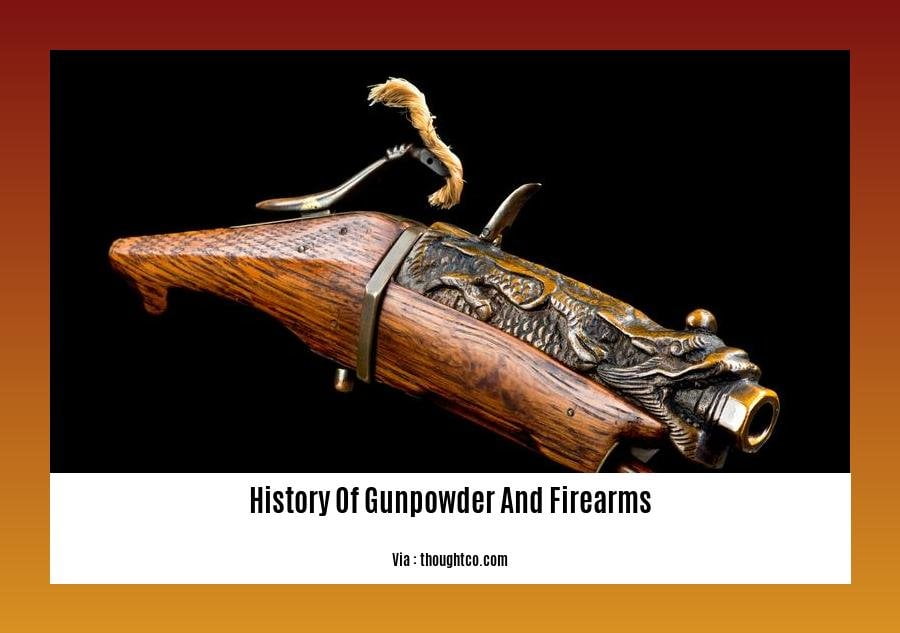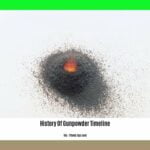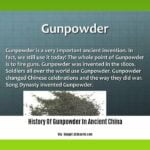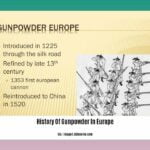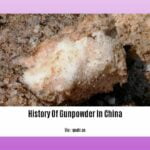Step into the annals of history and ignite your curiosity with [- A History of Gunpowder and Firearms]. From the humble beginnings of alchemical experimentation to their transformative impact on warfare, this article will illuminate the origins, evolution, and enduring legacy of these groundbreaking technologies. Prepare to delve into a riveting exploration of how gunpowder and firearms shaped the course of human history.
Key Takeaways:
- Gunpowder is a low-explosive mixture used in weapons and blasting agents.
- Gunpowder was first discovered in 9th century China.
- Chinese alchemists discovered gunpowder while searching for the elixir of immortality.
- Gunpowder knowledge spread quickly across Asia and Europe.
- The first non-Chinese record of gunpowder dates back to the 13th century.
**History Of Gunpowder And Firearms**

The invention of gunpowder was a pivotal moment in human history, revolutionizing warfare and leading to the development of firearms. Here’s a glimpse into its captivating journey:
Origins in Ancient China
The history of gunpowder and firearms traces back to 9th-century China. Alchemists seeking immortality accidentally stumbled upon a black powder mixture capable of producing a thunderous explosion.
Spread Across the World
Chinese explorers and traders disseminated knowledge of gunpowder throughout Asia and Europe. By the 13th century, Arab scholars had documented its existence. The Mongols, known for their expansive conquests, may have played a role in its global spread.
Evolution of Firearms
The first known firearms, primitive cannons, emerged in 13th-century China. Over time, European inventors refined these weapons, leading to the development of muskets, pistols, and eventually, rifles.
Impact on Warfare
Gunpowder transformed warfare, making it more destructive and efficient. Armies equipped with firearms gained a significant advantage, fostering the rise of nation-states and shaping the course of military history.
Cultural and Technological Significance
Beyond its military implications, gunpowder had a profound impact on society. It paved the way for advancements in mining, quarrying, and engineering. The development of fireworks, an essential part of countless cultural celebrations, can also be attributed to gunpowder.
Today, the legacy of gunpowder continues to shape our world. Firearms remain an integral part of modern militaries and law enforcement, while gunpowder plays a crucial role in a wide range of industries. The history of gunpowder and firearms is a testament to human ingenuity and the transformative power of technology.
Do you want to know more about the history of gunpowder? Dive deeper into the History Of Gunpowder Timeline and get a vivid history. Also, it’s important to know about the History Of Gunpowder In Europe. You might be shocked to know the History Of Gunpowder In China, then get into the History Of Gunpowder In Ancient China era as well. If you want to visit, don’t miss the History Of Gunpowder Falls State Park. Want to get all the above information at one place? Be there in History Of Gunpowder Wiki.
Impact of Gunpowder-Fueled Warfare on Society and Politics

Gunpowder, a transformative substance, revolutionized warfare, societal structures, and political power dynamics. Its impact continues to reverberate today, leaving an indelible mark on human history.
Societal Impact
- Leveled the Playing Field: Gunpowder-fueled weapons democratized warfare, as even poorly trained armies could wield devastating firepower. This challenged feudal hierarchies and empowered new social classes.
Political Impact
Consolidation of Power: Gunpowder’s destructive potential led to the rise of centralized states. Kings and emperors used firearms to suppress rebellions and expand their territories, consolidating their power.
Military Superiority: Nations with access to superior gunpowder technology gained strategic advantages. They could wage victorious wars, secure resources, and assert their influence on the global stage.
Key Takeaways:
- Gunpowder transformed warfare, making it more lethal and empowering poorly trained armies.
- Gunpowder fueled the consolidation of power, as kings and emperors used firearms to suppress rebellions and expand their territories.
- Nations with access to superior gunpowder technology gained strategic advantages and asserted their influence on the global stage.
Citations:
- Gunpowder Revolution | Oxford Research Encyclopedia of Social Work
- How Gunpowder Changed the World | Live Science
Technological Advancements in Gunpowder and Firearms
Gunpowder’s Impact on Warfare
A game-changer in the world of warfare, gunpowder revolutionized the medieval landscape, paving the way for a modern era marked by destructive battles and shifting borders. It marked the dawn of chemical energy exploitation on a grand scale.
Emergence and Evolution of Firearms
China’s 13th-century innovation, the cannon, sparked the firearm revolution. Europe followed suit, developing muskets, pistols, and rifles. These personal firearms not only transformed warfare but also reshaped societal structures.
Technological Breakthroughs
The Technological Advancements in Gunpowder and Firearms were not limited to their destructive potential. Gunpowder found uses in mining, engineering, and even pyrotechnics, fueling advancements in diverse fields.
Key Takeaways:
- Gunpowder’s Chinese origins in the 9th century led to military innovations like the huo qiang.
- Europe embraced gunpowder technology through trade and conquests.
- Firearms, including cannons, muskets, and rifles, revolutionized warfare.
- Gunpowder’s impact extended beyond warfare to areas such as engineering and fireworks.
- The legacy of gunpowder continues in modern military and law enforcement.
Relevant Sources:
- The Invention of Gunpowder and Its Introduction Into Europe
- History of Gunpowder
Firearms in the 21st Century: Current Usage and Controversies
Key Takeaways:
- Gun ownership is highly prevalent in the United States, with a significant impact on public health and safety.
- Advances in firearm technology have led to increased firepower, rate of fire, and lethality.
- The gun industry faces ongoing scrutiny and debate over regulations and the role of firearms in society.
Firearms have become an integral part of modern society, serving various purposes such as self-defense, hunting, and law enforcement. However, their proliferation has also sparked intense debates and controversies.
In the 21st century, the availability and use of firearms have reached unprecedented levels. The United States, in particular, stands out with a staggering gun circulation rate and gun death rate. This widespread ownership has contributed to concerns about gun violence, mass shootings, and the ease of access to firearms.
Moreover, technological advancements have transformed the nature of firearms. Modern firearms boast increased firepower, faster rates of fire, and greater accuracy. Such advancements have heightened concerns about the lethality and potential misuse of firearms, raising questions about the need for regulations and restrictions.
The gun industry has also undergone significant changes in recent decades. The rise of the “gun lobby” and the development of new technologies have made firearms more accessible and dangerous. This, in turn, has fueled debates about the role of gun manufacturers and the responsibility they bear for the misuse of their products.
As we navigate the 21st century, the controversies surrounding firearms are likely to continue. It is essential for society to engage in informed discussions about gun ownership, regulations, and the impact of firearms on public safety and societal well-being.
Relevant Sources:
- Gun Violence in the Twenty-First Century
- Gun Violence and Gun Policy in the United States: Understanding History, Culture, and Policy
FAQ
Q1: When and where was gunpowder first invented?
A1: Gunpowder was first invented in the 9th century during the Tang dynasty in China.
Q2: How did the knowledge of gunpowder spread throughout the world?
A2: Knowledge of gunpowder spread rapidly throughout Asia and Europe, possibly due to the Mongol conquests.
Q3: What was the significance of the Gunpowder Revolution?
A3: Gunpowder bridged the gap between the medieval and modern eras technologically and changed the nature of warfare.
Q4: What are the key ingredients in gunpowder?
A4: The key ingredients in gunpowder are potassium nitrate, carbon, and sulfur.
Q5: What impact did the invention of firearms have on warfare?
A5: The invention of firearms revolutionized warfare, affecting how battles were fought and borders drawn, and marking the beginning of large-scale chemical energy exploitation.
- China II Review: Delicious Food & Speedy Service - April 17, 2025
- Understand Virginia’s Flag: History & Debate - April 17, 2025
- Explore Long Island’s Map: Unique Regions & Insights - April 17, 2025
